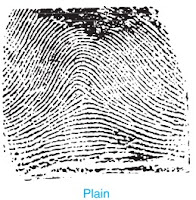Crime Scene: Definition, Types and Characteristics
What is a Crime Scene ?
A place where the crime is committed or where the maximum physical evidence related to crime is found is known as a crime scene. A crime scene is a starting point of the investigation which provides information about the suspect and the victim. This helps to reconstruct the crime and fast resolution of the case.
It is noted that the crime scene is not limited to a single place but may extend to a wider area depending upon the nature of the crime committed. For example, In a murder case where murder is done at one place and the body is disposed on another place. In this case, we have two crime scenes that give information about the crime.
Types of Crime Scene
Based on evidence found on the crime scene:
1. Primary Crime Scene
The crime scene where the actual crime occurred or where more usable pieces of evidence were found is known as the primary crime scene. For example, A murder scene, theft, assault, etc.
2. Secondary Crime Scene
The crime scene which is some or another way related to the crime but is not a place where the actual crime is committed is known as a secondary crime scene. It is very important because it may provide a strong link between the suspect and the victim.
For example, In a murder case where murder is done at one place and the body is dumped in a different place. In this case, the secondary crime scene (where the body is dumped) can provide more information in terms of evidence like cloth, fiber, hair, weapon, etc. of the suspect. This will help to trace the primary crime scene.
Based on the geographical location of the crime scene:
1. Outdoor crime scene
A crime that is committed in an open and wide area like a field, park, road, playground, etc. is known as an outdoor crime scene. An outdoor crime scene is more vulnerable to loss or contamination of evidence by sunlight, air, or extreme weather.
Thus, outdoor crime demands professional handling of evidence and documentation by the first responding office or a forensic expert.
Characteristics of outdoor crime scene
1. Evidence found at an outdoor crime scene is more susceptible.
2. It requires larger investigating teams depending upon the size of the crime scene.
3. It is more prone to a damage of evidence by climatic conditions.
4. More eye witnesses can be found in outdoor crime scenes which can help to solve the case more quickly.
5. Grid or strip search method provides a better result to find evidence at an outdoor crime scene.
2. Indoor Crime Scene
A crime that is committed in an enclosed and small area like a room, hall, corridor, kitchen, etc. is known as an indoor crime scene. An indoor crime scene is less vulnerable to loss or contamination of evidence by whether condition as it occurred in an enclosed area.
Thus, timely cordoning of the entry/exit gates of the place like doors and windows help to collect evidence easily and fast resolution of the case can be done.
Characteristics of Indoor Crime Scene
1. Evidence found in an indoor crime scene is less susceptible.
2. It requires a small team of IOs/ Forensic experts as the area of an indoor crime scene is generally small.
3. It is less prone to damages of evidence through climatic conditions.
4. Less or no eye witness can be found in an indoor crime scene as their areas are generally closed and protected.
5. Spiral, circular, and zone search methods provide better results to find evidence at an indoor crime scene.
3. Mobile/ Conveyance Crime Scene
Conveyance is a means of transportation. Types of crimes committed in conveyances include the following: Vehicle, Train/Bus, Lift, Flight. Physical evidence recovered from these scenes may extend well beyond the conveyance.
Suspects leaving in a hurry may carelessly leave additional evidence. A conveyance, such as a vehicle, may be transported to the laboratory after proper documentation has been completed.






